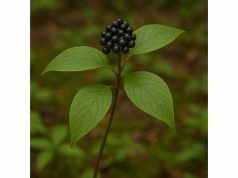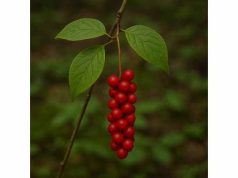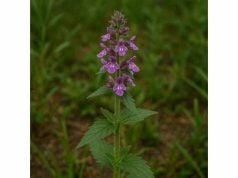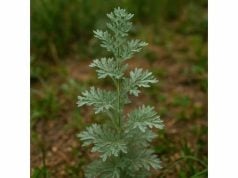Willow bark is a time-honored herbal remedy known for its exceptional pain-relieving and anti-inflammatory properties. Derived from the bark of various willow tree species, it boasts a unique array of active compounds, most notably salicin, which the body converts to salicylic acid—a precursor to aspirin. For centuries, willow bark has supported joint comfort, fever reduction, and headache relief. Today, its medicinal uses span natural pain management, skincare, and overall wellness. As we delve into willow bark’s botanical profile, key ingredients, core healing properties, and safe applications, you’ll discover why this ancient herb continues to be celebrated for its versatility and therapeutic value.
Table of Contents
- Distinctive Botanical Features and Natural Habitat
- Phytochemical Composition and Essential Ingredients
- Wellness Benefits and Medicinal Qualities
- Practical Applications, Dosage, and Safety
- Current Research and Important Findings
- FAQ
Distinctive Botanical Features and Natural Habitat
Willow bark originates from several species in the Salix genus, most notably Salix alba (white willow), Salix purpurea (purple willow), and Salix fragilis (crack willow). These deciduous trees and shrubs thrive in temperate regions across Europe, Asia, and North America, often lining riverbanks and moist meadows. White willow, with its pale, deeply fissured bark, is the most recognized medicinal variety.
The willow tree’s long, slender leaves are typically lance-shaped with finely serrated edges and a distinctive silvery or bluish hue on the underside. In spring, willows produce catkins—soft, elongated flower clusters that sway gracefully in the wind. The bark itself is smooth when young but matures into a rugged, furrowed texture, varying in color from yellowish-brown to gray.
Willows flourish in wet, well-drained soils and prefer full sun to partial shade. Their extensive root systems help prevent soil erosion along waterways. Botanically, they are easily distinguished by their elegant, arching branches and flexible twigs.
Harvesting medicinal willow bark requires skill and respect for the tree. Bark is usually collected in spring from young branches, when the plant’s healing compounds are most concentrated. Proper identification is essential, as not all willow species contain the same levels of beneficial constituents.
Phytochemical Composition and Essential Ingredients
The therapeutic power of willow bark is deeply rooted in its unique blend of natural compounds. These active ingredients synergistically deliver the herb’s renowned healing effects. Let’s examine the most important components found in willow bark:
- Salicin
- Salicin is the signature active compound of willow bark. After ingestion, the body converts salicin into salicylic acid, a potent anti-inflammatory and pain-relieving agent. This process inspired the creation of modern aspirin and forms the basis for willow bark’s effectiveness against pain and fever.
- Flavonoids
- Willow bark is rich in flavonoids, such as naringenin, isosalipurposide, and catechin. These antioxidants combat oxidative stress, enhance immune defense, and amplify the bark’s anti-inflammatory impact.
- Polyphenols
- Polyphenols like tannins and proanthocyanidins contribute astringent, antimicrobial, and antioxidant properties. They protect cells from damage and support the healing of minor wounds and skin irritations.
- Phenolic Glycosides
- Compounds like salicortin and tremulacin reinforce the bark’s pain-relieving and anti-inflammatory effects. They work in tandem with salicin to reduce discomfort and swelling.
- Tannins
- Tannins help soothe mucous membranes, reduce minor bleeding, and provide a mild drying effect, making willow bark a valuable remedy for digestive complaints.
- Alkaloids and Minerals
- Trace alkaloids, along with minerals such as calcium, magnesium, and potassium, add subtle therapeutic value, contributing to the bark’s overall health-promoting profile.
Each compound plays a distinct role, making willow bark a multi-faceted herbal medicine. The harmony among these ingredients enhances not only its pain-relieving power but also its capacity to support holistic well-being.
Wellness Benefits and Medicinal Qualities
Willow bark’s legacy as a “natural aspirin” extends far beyond pain relief. This versatile herb offers a broad spectrum of benefits, making it a staple in natural wellness traditions and integrative health practices.
Key Benefits and Healing Properties of Willow Bark:
- Natural Pain Management
Willow bark’s salicin content delivers effective relief for headaches, muscle aches, lower back pain, and joint discomfort. Unlike synthetic painkillers, it tends to be gentler on the stomach and less likely to cause irritation when used appropriately. - Anti-Inflammatory Support
Its anti-inflammatory compounds, including salicin, flavonoids, and polyphenols, reduce swelling and ease symptoms of conditions like osteoarthritis, rheumatoid arthritis, and sports injuries. - Fever Reduction
Traditionally used to bring down fevers, willow bark helps regulate body temperature during colds, influenza, and other febrile illnesses. - Antioxidant Protection
The flavonoids and polyphenols present in willow bark protect cells from free radical damage, supporting cardiovascular health and reducing the risk of chronic diseases. - Digestive and Mucosal Soothing
Tannins and astringent compounds help calm mild diarrhea, soothe inflamed mucous membranes, and promote gastrointestinal comfort. - Skin Health and Topical Use
When applied externally, willow bark extracts support wound healing, ease minor burns, and reduce redness and irritation. It’s a popular ingredient in natural skincare, particularly for acne-prone or sensitive skin. - Adjunct for Heart Health
Willow bark’s antioxidants and anti-inflammatory compounds may help support overall vascular health, though more research is needed for definitive conclusions.
Willow bark’s healing properties stem from a complex interplay of its constituents. When used responsibly, it serves as a gentle yet effective alternative for a wide array of wellness needs.
Practical Applications, Dosage, and Safety
Willow bark’s many applications span traditional remedies and modern herbal supplements. Whether taken internally or used topically, understanding proper use and safety precautions ensures you can maximize its benefits while minimizing potential risks.
Popular Applications of Willow Bark:
- Herbal Teas and Decoctions:
Dried willow bark chips can be simmered to create a tea that helps reduce pain, fever, and inflammation. Steep 1–2 teaspoons of bark in hot water for 10–15 minutes; strain and drink up to three times daily as needed. - Tinctures and Liquid Extracts:
Alcohol-based or glycerin-based tinctures provide a concentrated source of willow bark’s active compounds. Adult dosages typically range from 2–4 ml, two to three times per day. - Capsules and Tablets:
Standardized supplements offer measured amounts of salicin and other ingredients, making them convenient for consistent daily use. Follow the manufacturer’s dosing recommendations or consult an herbal practitioner. - Topical Creams and Gels:
Willow bark extracts are found in creams, gels, and ointments for direct application to sore muscles, joints, or irritated skin. These preparations can reduce inflammation and promote healing locally. - Cosmetic and Skincare Formulations:
Willow bark is a popular natural exfoliant and clarifying agent for acne-prone skin due to its gentle astringent and anti-inflammatory qualities.
Dosage Guidelines:
- Adults: Common dosages provide 60–120 mg of salicin daily, divided into two or three doses.
- Children: Not recommended for children under 16 due to the risk of Reye’s syndrome, a rare but serious condition.
- Duration: Use for short-term symptom relief unless supervised by a healthcare provider.
Safety Precautions and Contraindications:
- Allergy Warning:
Avoid willow bark if you have an allergy to aspirin or salicylates. - Medical Interactions:
May interact with blood thinners, NSAIDs, or medications for diabetes and high blood pressure. - Pregnancy and Breastfeeding:
Not recommended during pregnancy or breastfeeding due to limited safety data. - Possible Side Effects:
Side effects are uncommon but may include stomach upset, rash, or dizziness.
Practical Usage Tips:
- Start with the lowest effective dose to assess tolerance.
- Combine with other anti-inflammatory herbs (such as turmeric or ginger) only with professional guidance.
- Store dried bark and supplements in a cool, dry place away from direct sunlight.
Always consult with a knowledgeable healthcare provider before starting willow bark—especially if you have chronic health conditions or take prescription medications. Responsible use ensures that you can harness the full potential of willow bark while protecting your well-being.
Current Research and Important Findings
Scientific interest in willow bark has surged in recent decades, providing modern validation for its traditional uses. Here are some of the most significant research insights and key findings that shape our understanding of willow bark’s medicinal properties:
- 2001 – “Efficacy of Willow Bark Extract in Osteoarthritis” (Phytomedicine)
- This clinical study demonstrated that willow bark extract significantly reduced pain scores in individuals with osteoarthritis of the knee and hip compared to placebo.
- 2009 – “Willow Bark for Low Back Pain: A Meta-Analysis” (American Journal of Medicine)
- The analysis found that standardized willow bark extract provided meaningful relief from lower back pain with a safety profile similar to that of conventional painkillers.
- 2014 – “Antioxidant and Antimicrobial Activities of Salix alba” (Journal of Ethnopharmacology)
- Researchers reported that extracts from white willow bark possess notable antioxidant activity, helping protect cells from damage and inhibiting the growth of certain bacteria.
- 2017 – “Salicin and Inflammatory Pathways” (Pharmacological Research)
- This investigation explored how salicin and related compounds in willow bark influence inflammatory pathways, confirming their ability to inhibit prostaglandins responsible for pain and swelling.
- 2020 – “Willow Bark Extract and Skin Health: Clinical Evidence” (International Journal of Cosmetic Science)
- Clinical evaluation indicated that topical application of willow bark extract could reduce acne lesions, calm skin inflammation, and promote clearer, healthier skin.
- 2023 – “Comparative Safety of Herbal Analgesics” (Complementary Therapies in Medicine)
- A review found that willow bark is generally well tolerated and offers a favorable safety profile for managing mild to moderate pain, with rare adverse effects compared to many synthetic analgesics.
The growing body of research highlights willow bark’s promise as a natural, effective alternative for pain relief and inflammation—offering reassurance for those seeking holistic approaches to health.
FAQ
What are willow bark benefits for pain relief?
Willow bark benefits pain relief by delivering natural salicin, which the body converts to salicylic acid. This compound reduces pain and inflammation for headaches, muscle aches, joint pain, and back pain, making willow bark a trusted remedy for natural pain management.
How is willow bark used for medicinal purposes?
Willow bark is used as tea, tincture, capsules, or topical creams for pain, inflammation, fever, and skin health. Its flexible applications make it a valuable choice for managing both internal and external discomfort with a natural approach.
What are the main active compounds in willow bark?
Willow bark’s main active compounds include salicin, flavonoids, polyphenols, tannins, and phenolic glycosides. Together, these ingredients provide its anti-inflammatory, pain-relieving, antioxidant, and healing properties.
Are there any side effects or risks of willow bark?
Willow bark is generally safe when used as directed, but may cause stomach upset, rash, or dizziness in rare cases. People allergic to aspirin, pregnant or breastfeeding women, and children under 16 should avoid willow bark.
Can willow bark be used for arthritis and joint pain?
Yes, willow bark is often used for arthritis and joint pain due to its natural anti-inflammatory and pain-relieving effects. Clinical research supports its benefits for osteoarthritis, lower back pain, and similar conditions.
What are the most popular willow bark applications today?
Popular willow bark applications include herbal teas, supplements, topical creams for muscle or joint pain, and natural skincare products for acne and inflammation. Its uses continue to expand in both traditional and modern wellness circles.
Disclaimer:
The information provided in this article is intended for educational purposes only and is not a substitute for professional medical advice, diagnosis, or treatment. Always consult your healthcare provider before beginning any new supplement, herbal remedy, or wellness regimen, especially if you have underlying health conditions or are taking medication.
If you found this article useful, please help others by sharing it on Facebook, X (formerly Twitter), or your favorite social platform. Your support allows us to continue producing high-quality, trusted wellness content. Don’t forget to follow us on social media for more natural health insights and updates!

















